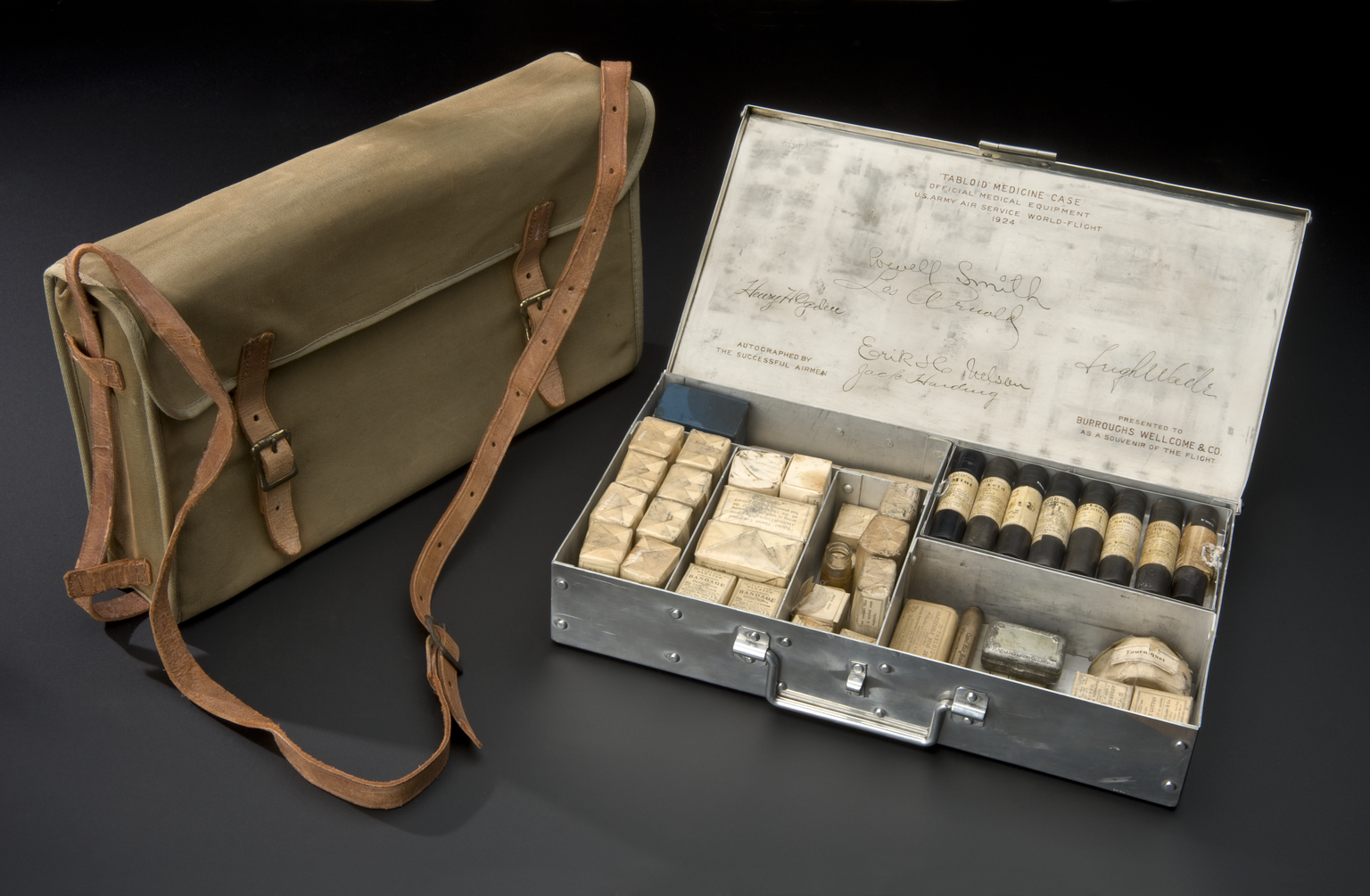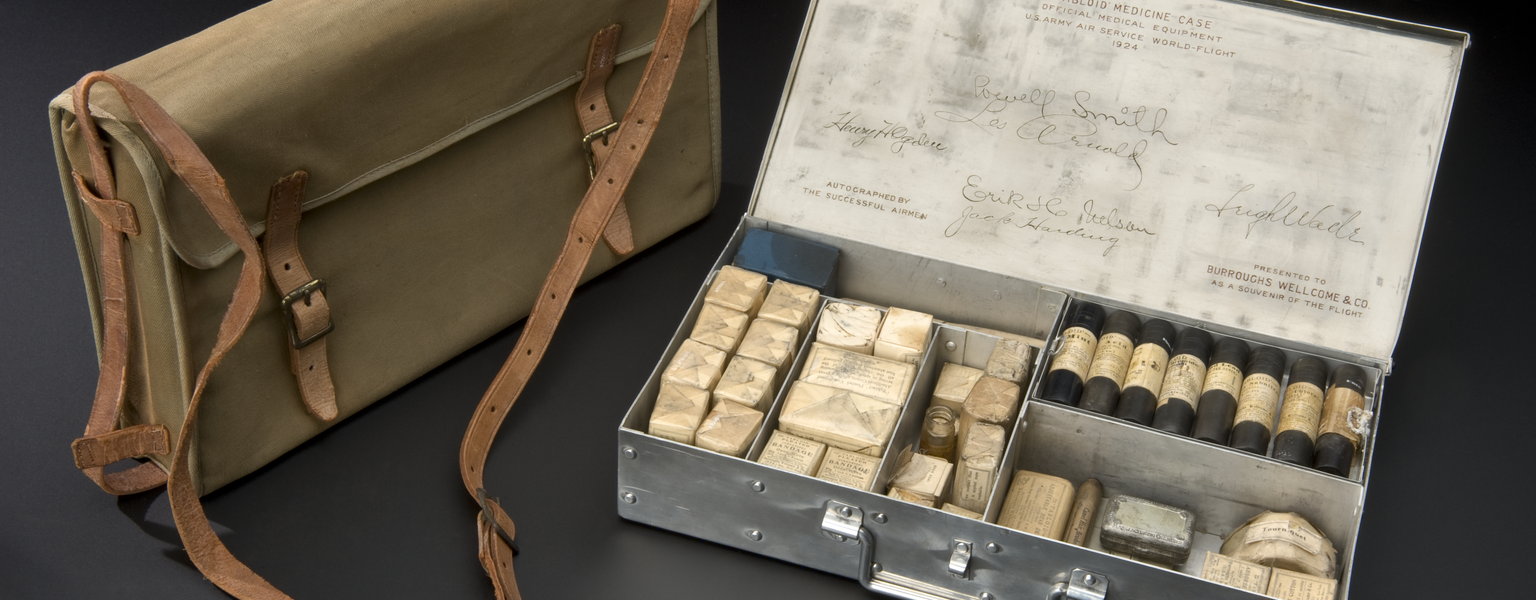On 6 April 1924 (96 years ago today), a crew of eight from the United States Army Air Service took to the skies in a daring attempt to become the first people to circumnavigate the globe by air.
To accompany them on their journey, they were presented with a first aid kit by British pharmaceutical company Burroughs, Wellcome and Co.

This kit is one of a number of ‘Tabloids’ that the Science Museum Group cares for. Medical kits bearing the company’s ‘Tabloid’ brand were given to famous expeditions to promote the company’s products.
The expeditions included the first non-stop transatlantic flight (and earlier transatlantic balloon flight), an Antarctic expedition, and an expedition to climb Mount Everest.
I had the opportunity to research this first aid kit and find out more about the round the world flight while completing an inventory check as part of an ambitious project to reveal more than ever before of our incredible collection.
It became clear to me that Silas Burroughs and Henry Wellcome were right to choose the American air team as one of the recipients of their Tabloids.
The crew had quite the adventure in the months that followed and would have generated the international publicity the two businessmen were hoping for. It was the ultimate product placement.

The crew took off from Seattle, Washington and travelled 30,000 miles, making 74 stops along the way, on a journey that would last 175 days.
The team travelled in four aircraft: Seattle, Chicago, Boston and New Orleans. It was by no means a smooth journey and only Chicago and New Orleans completed the entire trip.
Just 24 days after take-off, the team encountered dense fog and strong winds which caused Seattle to crash into the side of a mountain in Alaska.

While the aircraft was destroyed, the two crew onboard fortunately survived the crash and were found ten days later wandering the Alaskan wilderness.
This unfortunate episode was not the only obstacle to befall the intrepid adventurers, who survived several mechanical failures, crash landings, and even a stowaway journalist!
All the more important would this first aid kit have seemed to the airmen in light of such dangers.
The kit was housed inside an aluminium case and canvas satchel. It contained a variety of bandages and dressings as well as medicines for pain relief, antiseptic, and upset stomachs.
Upon their return, the crew autographed the first aid kit and presented it back to Burroughs Wellcome and Co. as a gift.

Promoting their products through such expeditions was a shrewd marketing move by the pharmaceutical company.
The 1920s saw a heightened interest in exploration and adventure among the general public, in part due to the significant advances in aircraft technology that had been achieved during the First World War.
The world was beginning to seem smaller and exploration of it more feasible.
Experiences like those of the eight people who flew round the world 96 years ago would have captured the public’s imagination as they waited to find out the fate of the crew, or even to greet them in person when they landed.
A number of Tabloid medical kits are on display in Medicine: The Wellcome Galleries at the Science Museum. You can also explore these medical kits online.
